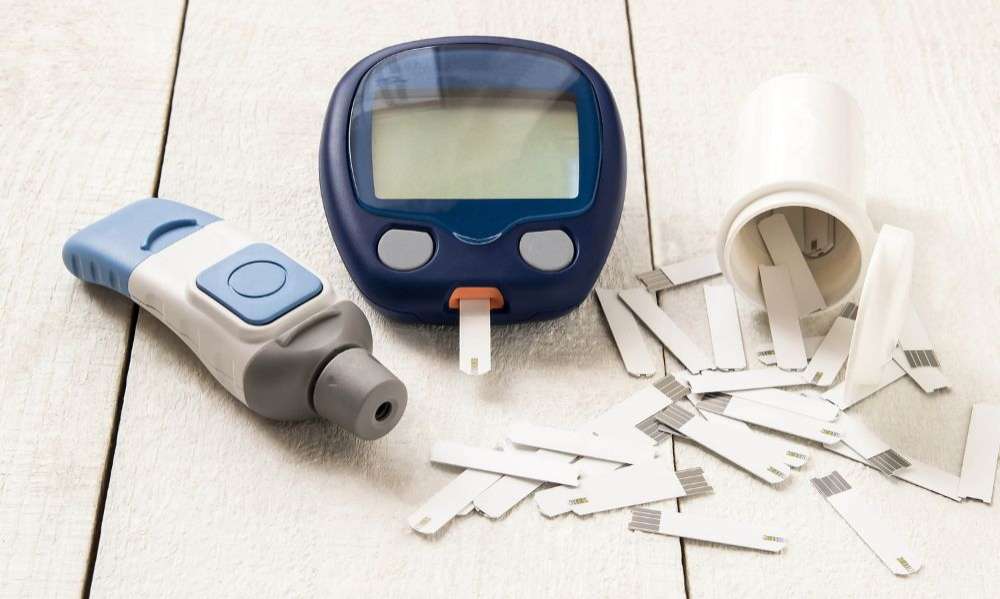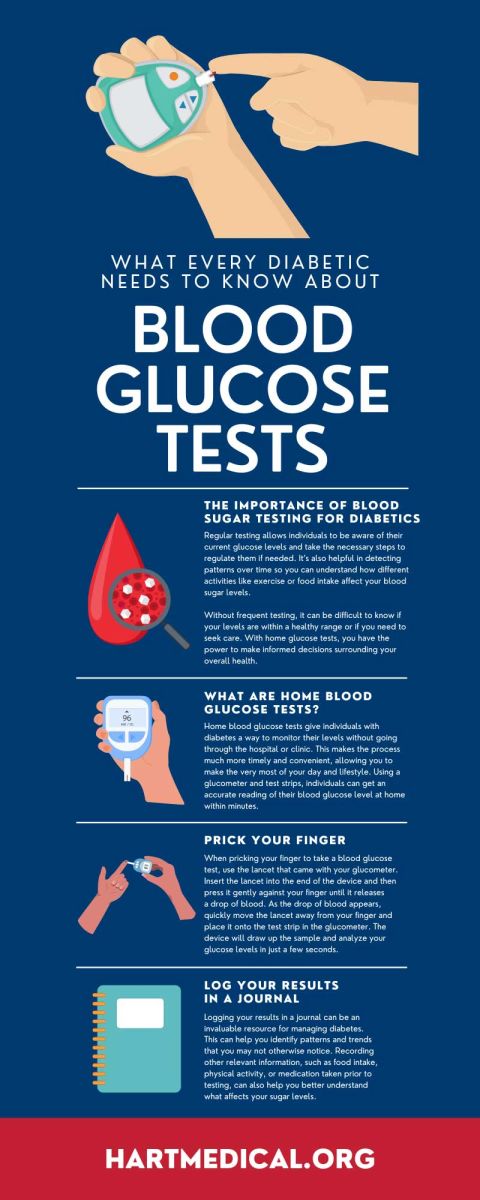What Every Diabetic Needs To Know About Blood Glucose Tests
Posted On: March 22, 2023 by Hart Medical Equipment in: Diabetes

Diabetes can be a challenging condition to manage. From frustrating symptoms to frequent doctor’s visits, there’s a lot involved with staying comfortable. It’s important for people with diabetes to monitor their blood glucose levels and watch for telltale signs that may require medical attention. One way to do this is through at-home testing with a glucometer and test strips. Knowing the basics of blood glucose testing is essential for anyone with diabetes, so here’s what you need to know.
The Importance of Blood Sugar Testing for Diabetics
Regular testing allows individuals to be aware of their current glucose levels and take the necessary steps to regulate them if needed. It’s also helpful in detecting patterns over time so you can understand how different activities like exercise or food intake affect your blood sugar levels.
Without frequent testing, it can be difficult to know if your levels are within a healthy range or if you need to seek care. With home glucose tests, you have the power to make informed decisions surrounding your overall health.
What Are Home Blood Glucose Tests?
Home blood glucose tests give individuals with diabetes a way to monitor their levels without going through the hospital or clinic. This makes the process much more timely and convenient, allowing you to make the very most of your day and lifestyle. Using a glucometer and test strips, individuals can get an accurate reading of their blood glucose level at home within minutes. This is an effective tool for preventing dangerous spikes or drops in blood sugar levels that could require medical intervention.
Essential Testing Supplies
Before diving into additional specifics about at-home blood sugar testing, it’s crucial to know what items to have at your disposal. Make sure you have a glucometer, test strips, lancets, and alcohol wipes in your toolkit so you can monitor your levels with accuracy and ease. It’s also a good idea to keep extra batteries for your device in case you run low on power. Finally, having a logbook to record your results can help you track patterns over time and adjust your diabetes management plan as needed.
With the right supplies and knowledge, home blood glucose testing can be an effective tool for managing diabetes. Some additional testing supplies to have at home with you include:
- Control solution (used to check the accuracy of a glucometer)
- Sharps container (to safely discard lancets and other sharp objects)
- Carrying case (helpful for taking your testing supplies on the go)
How To Test Your Blood Glucose at Home
Once you have all the necessary supplies, it’s time to start testing. This is one of the most important things for any diabetic person to know about blood glucose tests because correctly performing the steps will provide the most accurate results. Here’s a basic rundown of the process.
Wash Up
Before taking your blood glucose test, wash your hands with soap and warm water. This helps reduce the risk of any contamination getting into your blood sample and affecting the accuracy of your results. Make sure to scrub thoroughly for at least 20 seconds, paying special attention to any areas where debris and germs could gather. Dry your hands with a clean towel before beginning the test.
Prepare a Test Strip
Once your hands are clean, insert the test strip into the glucometer. Use a clean testing strip every time you test your blood to prevent contamination and to receive the most accurate results. The device will indicate when it’s ready by either beeping or displaying an activation message on the screen.
Prick Your Finger
When pricking your finger to take a blood glucose test, use the lancet that came with your glucometer. Insert the lancet into the end of the device and then press it gently against your finger until it releases a drop of blood. As the drop of blood appears, quickly move the lancet away from your finger and place it onto the test strip in the glucometer. The device will draw up the sample and analyze your glucose levels in just a few seconds.
Read Your Results
Once the analysis finishes, the glucometer will display your blood glucose level. Look for a standard measurement between 70–130 mg/dL before meals. Two hours after eating, on the other hand, your blood sugar should read less than 180 mg/dL. A reading below 70 mg/dL is low and may require a quick-acting carbohydrate such as orange juice or glucose tablets. Readings above 180 mg/dL suggest that you may need to adjust your insulin dosage or make lifestyle changes such as increasing physical activity.
Tips and Tricks for Daily Blood Glucose Monitoring
Along with testing correctly, it’s also important that you have a few tips and tricks for incorporating it into your lifestyle. These are some effective methods.
Always Keep Your Supplies with You
For one, keeping your blood glucose testing supplies with you will allow you to monitor and adjust your levels on the go. Having a glucometer, test strips, lancets, and alcohol wipes on hand can give you the peace of mind that you’ll be able to check your glucose levels whenever needed.
Settle Into a Testing Routine
Developing a consistent testing schedule is another important part of managing diabetes. While the frequency of testing will vary from person to person, it’s important to make sure you’re checking your glucose levels regularly. Establishing a routine will help you notice changes in your sugar levels and adjust appropriately to stay within a healthy range. Over time, it may also help you identify patterns and better understand how different activities may affect your diabetes management plan.
Log Your Results in a Journal
Logging your results in a journal can be an invaluable resource for managing diabetes. This can help you identify patterns and trends that you may not otherwise notice. Recording other relevant information, such as food intake, physical activity, or medication taken prior to testing, can also help you better understand what affects your sugar levels. With a logbook of all your results, you’ll have a valuable tool for staying on top of your diabetes care.
Testing your blood glucose at home is an essential part of diabetes management, and having the right tools, supplies, and knowledge can help you stay on top of your health. That’s why we at Hart Medical Equipment provide a diverse range of durable diabetic medical equipment for at-home use. From testing strips to lancets to monitors, we carry it all so that you’re prepared.
>

0 comments